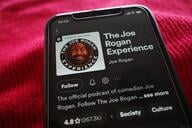You have /5 articles left.
Sign up for a free account or log in.
Pearson is today launching a student app that will provide tools to use with their Pearson books.
The app, according to Pearson, "will fundamentally change the way students access and experience college textbooks" by providing students with a range of tools that will allow them to highlight sections of the textbooks, listen to audio versions, create note cards and take quizzes.
The model will also represent a new source of revenue for Pearson. Students will pay what Pearson calls "budget-friendly" sums for access to the app:
- $9.99 per month for one Pearson ebook
- $14.99 per month for access to 1,500 Pearson ebooks.
Mike Tschudy, senior vice president for user experience at Pearson, said the app was designed to make the product appeal to students. The voice reading the books sounds real, not "robotic," for example. Pearson commissioned art to go on the app "that looks like the students who will be using it."
Andy Bird, CEO of Pearson, said the company plans a strong marketing campaign, targeting students. While students have a long history of purchasing Pearson products, they are generally acting on the recommendation of a professor to buy a book for a class, so Pearson's marketing has been faculty focused.
"I think many will buy it," he said. "We reach 10 million students a year" with Pearson books in U.S. higher education, he added.
He said Pearson did extensive research on pricing and was comfortable with the prices it had set.
One of Pearson's competitors, Cengage, has a student app that does largely what Pearson's new app does. And it is free to students who buy Cengage products.
Nhaim Khoury, senior vice president for strategy and finance for U.S. higher education at Cengage, said that more than 630,000 people downloaded the app in 2020. Cengage calculated that the students made 3.8 million notes and highlights using the app.
Khoury said it was important to remember that a lot of students don't have computers. For low-income students, an app can make or break their educational experience.
He said Cengage is very pleased with the response it has received to its app.
Roger Schonfeld, program director for libraries and scholarly communication at Ithaka S+R, said, "It sounds like this an effort to redevelop a student sales channel for a textbook publisher," and he said that made sense for Pearson.
The question, he said, is whether students will see the value.
"Will the student who is taking three courses that use Pearson books say this will make the difference between a C-minus and a B-plus?"
"I could see people seeing value," he said. But he said that value demonstration is critical, and he is curious about Pearson's marketing. "It's got to convince students of the value."
Joseph Esposito, a publishing consultant, saw the move by Pearson as significant.
"First, it's a mobile platform," he said, not a web-based platform. Higher education publishers generally have been slow to move to mobile.
The biggest advantage Pearson will gain is in competition with smaller publishers (smaller than Cengage), he said. A student with three courses with Pearson products may want a fourth, rather than using some small outfit, he said.
"This could lead to monopolizing market share," he said.




